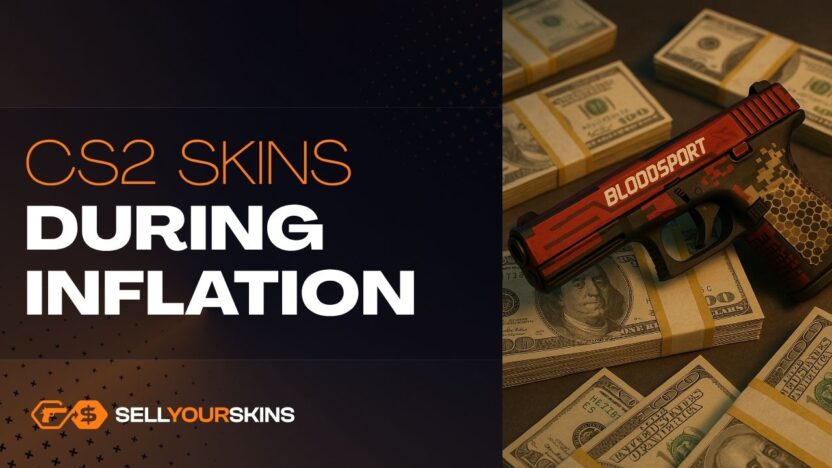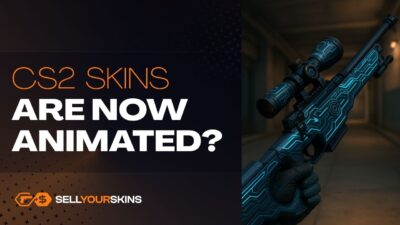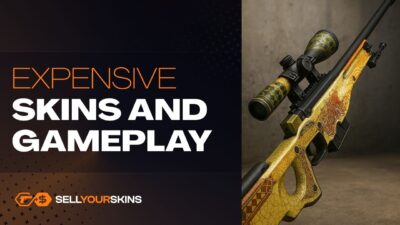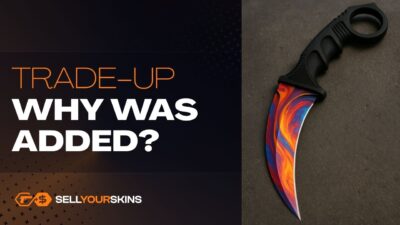Rising prices, declining purchasing power, and market uncertainty are pushing more and more people to look for alternative ways to protect their capital. For most players, CS2 skins are just cosmetic items, but for experienced traders they are a real digital asset with enormous value. What’s more, it’s a global market, not tied to any single currency, and in many cases significantly more resistant to inflation than traditional stores of value. It’s not a classic financial investment, but a well-chosen skin can act as a safeguard of value – similar to limited-edition sneakers or collectible trading cards.
Why skins don’t lose value as fast as currency?
The key difference is that currency is directly tied to a state’s monetary policy – and skins are not. Their price is driven by supply and demand within the community, not by the decisions of a government or central bank. If a case stops dropping, the number of available skins stops increasing. This creates a naturally limited supply – just like in physical collector markets.
A simple market example: many older skins from CS:GO gained value multiple times over simply because they became “rarer” as time passed. Inflation does not directly affect them – on the contrary, it often increases the demand for assets that are disconnected from traditional currencies.
Rarity and removal from the drop pool = the main source of value protection
The most stable “inflation shield” skins are those that:
- come from old cases that no longer drop,
- are tied to one-time events (e.g., Majors),
- exist in low-float or rare pattern variants,
- have confirmed collector demand.
Once Valve removes a case from the active rotation, the number of existing skins of that type becomes “frozen.” This works the same way as the supply of limited physical goods – there will never be more of them, and demand usually grows over time.
Digital items and market psychology
Skins aren’t bought solely for speculation – people actually use them, show them off on streams, and match them with gloves. In practice, this means demand comes from both investors and regular players. That’s a major difference compared to traditional assets, because it keeps the market “alive” even during financial stagnation.
This is why the prices of rare skins often don’t fall even when some players temporarily step away from trading. And when interest returns (for example, during a big update), the value can increase dramatically.
Why are skins easier to liquidate than physical collectibles?
Unlike collectible shoes, trading cards, or figurines, a digital skin can be sold instantly – there’s no shipping, no risk of physical damage, and no intermediaries. You can hold a skin for a year as a “store of value,” and when you decide the moment is right to sell, you do it immediately. SellYourSkins makes this process even simpler by buying the skins outright and allowing you to withdraw the funds in real money (PayPal, bank transfer, Revolut, crypto) instead of locking the value inside the Steam wallet. That’s the biggest difference – on the Steam Market the money stays inside the platform, while here you can actually cash out the value.
Why can a skin sometimes be a better store of value than currency?
In short:
- currency depreciates (loses purchasing power),
- rare skins “decomplete” over time (fewer pieces remain in circulation),
- demand for visually appealing items stays stable or increases,
- inflation benefits collectible goods.
Experienced players don’t treat skins as a “quick investment,” but rather as a digital collectible that can be liquidated when needed. CS2 is still the most popular game on Steam, so there’s no indication that the skin market hype will fade anytime soon.



